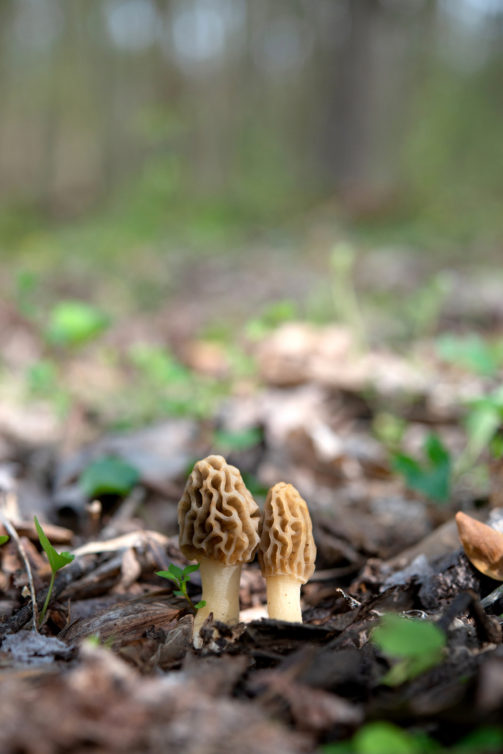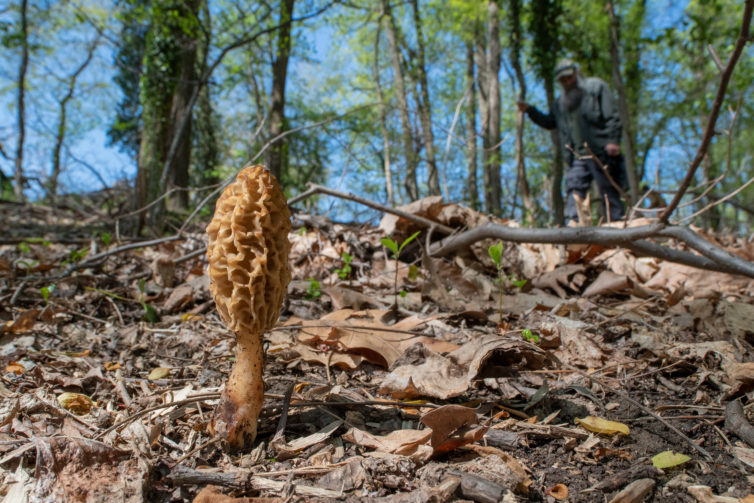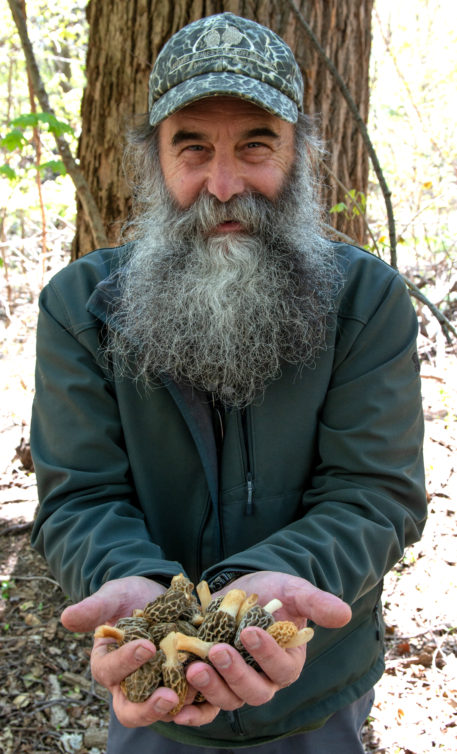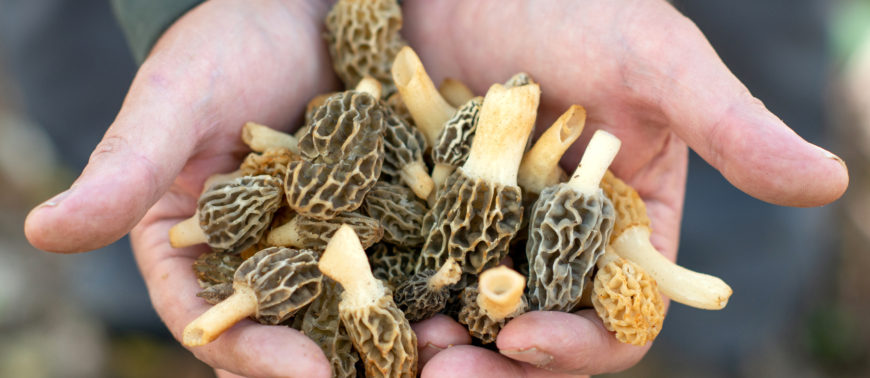Nature’s grocery store is not open 24 hours a day, 7 days a week. No, her hours and supply change with the seasons. But if you know where and when to go shopping, the rewards can be great, and it won’t break the bank.
One of the most expensive food items in the world is the prized truffle, a wild mushroom. The white mushroom can cost upwards of $168 per ounce. While this is out of reach for most people, the morel is the next best thing. Prized for its taste and versatility by chefs throughout the world, morels emerge for a short time in spring.
It is important to understand and know for sure what you are picking to eat is safe for consumption.
Morels are one of the easiest and safest mushrooms to hunt. They feature a stem topped by a conical body that is covered with pits and ridges like a honeycomb. All morels are hollow and when cut in half from top to bottom are radially symmetrical (the two halves will be mirror images). Make sure to cut the mushrooms in half because there are several species of false morel. False morels are not hollow and are not radially symmetrical when cut in half. NOTE: Morels should not be eaten raw, and some literature suggests that you should not consume alcohol when eating morels.
Most literature references May as the time to pick morels, but spring can be fickle. A better way to tell when it is morel season is to read the forest. Here are a few indicator plants I reference to time my morel hunts.
- One of the first plants that I look for as an indicator for morels is red bud (Cercis canadensis), when the red buds are in blossom morels are up.
- Serviceberry (Amelanchier spp.) is another plant that tells me morels are up when they are in blossom.
- Other plants I use as indicators are dandelions (Taraxacum officinale), mayapples (Podophyllum peltatum), and oaks (Quercus spp.) I was taught that when oak leaves are the size of a squirrel’s ear, morels are up.
You won’t find morels just anywhere. Morels grow in rich upland forests where they share a symbiotic relationship with certain trees. The morels colonize the root system of some trees, and provide increased nutrient and water absorption for the trees. In return, the trees provide the morels with carbohydrates produced from photosynthesis. The following trees are all good choices to look around for morels: tulip trees (Liriodendron tulipifera.), ash trees ( Fraxinus spp.), Elm (Ulmus spp.), and apple trees.

Yellow Morels (Photo by Joe McSharry)
Soil temperature and moisture are all important for a good morel season. When soil temperatures reach 50 degrees F with sufficient rainfall, morels will start to grow. A sudden cold snap will only retard their growth, but a dry spell will mark the end of additional morel growth. I start looking on south facing slopes first. North facing slopes will produce morels later.
Finding morels takes a trained eye. You should look directly at your feet and scan the ground from side to side, then slowly look ahead. Once you find a morel look carefully in the area for additional morels that may or may not be present. Morels can grow singularly or sometimes in large groups. Often you will find one or two morels growing in an area and nothing else, but occasionally you will find an area that will contain dozens or more!

Nick searching for the delectable morel (Photo by Joe McSharry)
When picking morels, you should cut the morel even with the ground and trim of any soil that may be left. Do not pull the morel out of the ground as this may damage the mycelium (root system).
Several indicators also signal the end of the morel season. When the tulip trees and black locust (Robinia pseudoacacia) are in flower, the morel season is coming to a close. The showy orchis (Galearis spectabilis) blossom also signals the end of morel season, but you should take the time to enjoy both the amazing fragrance and beauty of this plant.

Nick Spero with a handful of morels (Photo by Joe McSharry)

